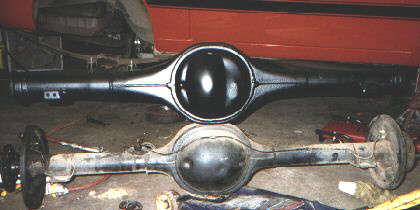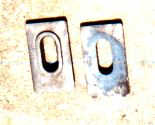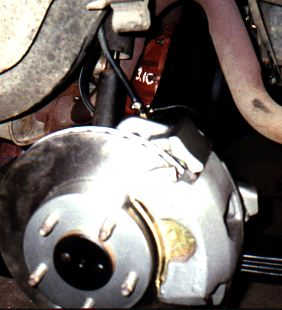1977 Lincoln Versailles Rearend Swap - Installation



This comparison shows how much stronger the 9-inch is. The thick webbing on the later 9-inch rears is not found on earlier 9-inches. In fact, until the mid-1970s the 9-inches looked much like the 8-inch shown, but had a bigger center. Although it appears wider than my 8-inch, the difference is only about 1/8 of an inch by the axle housings. Adding the rotors adds more width, and the assembly is about an inch wider than the stock assembly.
The pictures to the right show two very important variables in the swap. You must retain the stock mounting bolts and the "wedge." The Versailles rearend's leaf spring "perches" are not level, and (for whatever reason) use wedges to maintain proper pinion alignment. The wedges fit into a bracket that bolts onto the leaf spring. I eliminated this bracket, and in doing so had to grind the flange off the wedge so it would fit flat on my leafs. The bracket could be swapped over, but it would raise the rear further, making the car sit lower. The wedges do lower the car somewhat, and I eventually added a leaf from the Versailles to compensate. Shown upper right is the wedge and bolt, lower right the wedge before and after removing the flange.


The rear is installed in the Maverick. It lines up perfectly with the leafs, and installation is a snap. Notice in the above picture how the wedge fits under the leaf perch.
I had to buy new rotors & pads, but because this Versailles was on the road, I only cleaned & tested the calipers. It is strongly suggested that if you cannot road test your rearend you should rebuild the calipers.

Isn't it beautiful? I used a 57 Ford rear chunk, 3.10:1 open. I have since changed to a 3.70:1 Traction-Lok set that I believe is the best compromise between highway and street.